Variable frequency drive Mains Connection
Warning!
The control, mains and motor lines must be kept physically separate from one another. The cables connected to the variable frequency drives may not be subjected to high-voltage insulation tests unless appropriate circuitry measures are taken before.
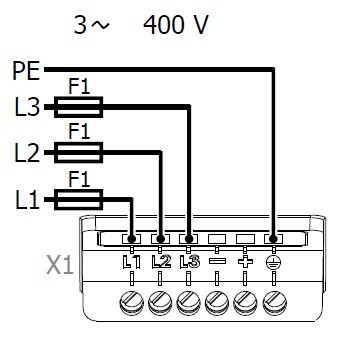
Dimensioning of conductor cross-section
The VFD cable dimensions must be selected according to the current load and voltage drop to be expected.
Select the VFD cable cross-section of the cables such that the voltage drop is as small as possible. If the voltage drop is too great, the motor will not reach its full torque.
Comply with any additional national and application-specific regulations and the separate UL instructions.
Select cross-sections of PE conductor according to EN61800-5-1:
Typical cross-sections
The following table provides an overview of typical variable frequency drives cable cross-sections (copper cable with PVC insulation, 30 °C ambient temperature, continuous mains current max. 100% rated input current). Actual cable cross-section requirements may deviate from these values due to actual operating conditions.
Three-phase connection (L1/L2/L3), 380 V
Please note, that the mentioned typical cross sections do not consider other factors like fuses. Comply with applying local standards and applying branch standards.
Connection to IT mains
For connection to IT mains, pull out the plug-type jumper.
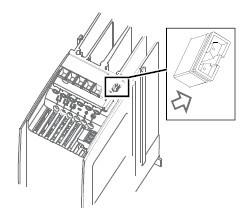
Note: Removing the jumper reduces interference immunity and increases the emitted interference. Interference immunity can be increased by means of external filters. Additional work for EMC conformity may be possible. Comply with the EMC information.
- Disconnect the variable frequency drive from mains voltage and protect it against being energized unintentionally.
- Verify that the variable frequency drive is discharged.
- Wait for some minutes until the DC link capacitors have discharged before starting to work at the unit.
- When the variable frequency drive is disconnected from power supply, the mains, DC-link voltage and motor terminals may still be live for some time.
The control, mains and motor lines must be kept physically separate from one another. The cables connected to the variable frequency drives may not be subjected to high-voltage insulation tests unless appropriate circuitry measures are taken before.

Dimensioning of conductor cross-section
The VFD cable dimensions must be selected according to the current load and voltage drop to be expected.
Select the VFD cable cross-section of the cables such that the voltage drop is as small as possible. If the voltage drop is too great, the motor will not reach its full torque.
Comply with any additional national and application-specific regulations and the separate UL instructions.
Select cross-sections of PE conductor according to EN61800-5-1:
|
Mains cable |
Protective conductor |
|
Mains cable up to 10 mm² |
Install two protective conductors of the same size as the mains cable, or one protective conductor of a size of 10 mm². |
|
Mains cable 10…16 mm² |
Install one protective conductor of the same size as the VFD mains cable. |
|
Mains cable 16…35 mm² |
Install one protective conductor with a cross-section of 16 mm². |
|
Mains cable > 35 mm² |
Install one protective conductor of half the size of the VFD mains cable. |
Typical cross-sections
The following table provides an overview of typical variable frequency drives cable cross-sections (copper cable with PVC insulation, 30 °C ambient temperature, continuous mains current max. 100% rated input current). Actual cable cross-section requirements may deviate from these values due to actual operating conditions.
Three-phase connection (L1/L2/L3), 380 V
|
Power |
Mains cable |
PE-conductor |
Motor cable |
|
0,37 kW 0.75 kW 1.5 kW 2.2 kW 4.0 kW |
1.5 mm² |
2x1.5 mm² or 1x10 mm² |
1.5 mm² |
|
5.5 kW 7.5 kW |
2.5 mm² |
2x2.5 mm² or 1x10 mm² |
2.5 mm² |
|
11.0 kW |
4 mm² |
2x4 mm² or 1x10 mm² |
4 mm² |
Please note, that the mentioned typical cross sections do not consider other factors like fuses. Comply with applying local standards and applying branch standards.
Connection to IT mains
For connection to IT mains, pull out the plug-type jumper.

Note: Removing the jumper reduces interference immunity and increases the emitted interference. Interference immunity can be increased by means of external filters. Additional work for EMC conformity may be possible. Comply with the EMC information.
Post a Comment:
You may also like:
Featured Articles
What is VFD, How it works? - VFD ...
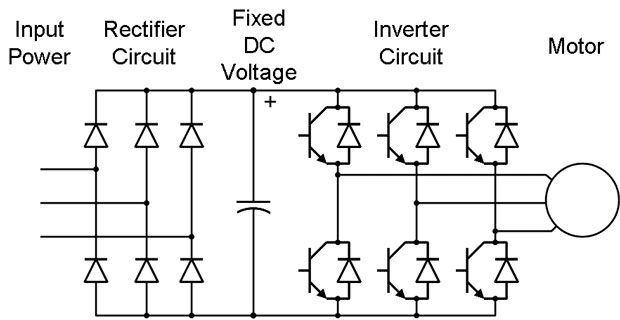 VFD is shorted for Variable Frequency Drive (also known as AC Drives and Inverters) -- that's used to make an AC motor working in ...
VFD is shorted for Variable Frequency Drive (also known as AC Drives and Inverters) -- that's used to make an AC motor working in ...
 VFD is shorted for Variable Frequency Drive (also known as AC Drives and Inverters) -- that's used to make an AC motor working in ...
VFD is shorted for Variable Frequency Drive (also known as AC Drives and Inverters) -- that's used to make an AC motor working in ...VFD: Insulated Gate Bipolar Transistor ...
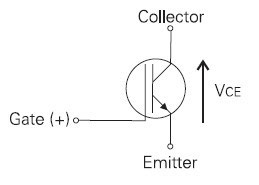 IGBT (insulated gate bipolar transistor) provides a high switching speed necessary for PWM VFD operation. IGBTs are capable of ...
IGBT (insulated gate bipolar transistor) provides a high switching speed necessary for PWM VFD operation. IGBTs are capable of ...
 IGBT (insulated gate bipolar transistor) provides a high switching speed necessary for PWM VFD operation. IGBTs are capable of ...
IGBT (insulated gate bipolar transistor) provides a high switching speed necessary for PWM VFD operation. IGBTs are capable of ...Three phase inverters
 In the variable frequency drive rectifier paper, it explains how to go from three phase alternating current voltage to a direct ...
In the variable frequency drive rectifier paper, it explains how to go from three phase alternating current voltage to a direct ...
 In the variable frequency drive rectifier paper, it explains how to go from three phase alternating current voltage to a direct ...
In the variable frequency drive rectifier paper, it explains how to go from three phase alternating current voltage to a direct ...Variable Frequency Drive Harmonics and ...
A discussion of the benefits of variable frequency drives often leads to a question regarding electrical harmonic distortion ...
Variable frequency drive Energy saving
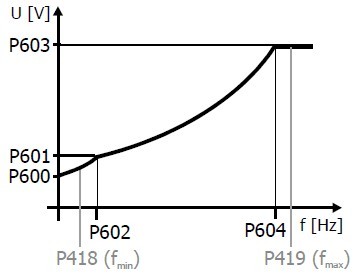 Energy can be saved in a VFD by reducing the losses in the electric motor or by reducing the energy consumption of the variable ...
Energy can be saved in a VFD by reducing the losses in the electric motor or by reducing the energy consumption of the variable ...
 Energy can be saved in a VFD by reducing the losses in the electric motor or by reducing the energy consumption of the variable ...
Energy can be saved in a VFD by reducing the losses in the electric motor or by reducing the energy consumption of the variable ...
VFD manufacturers
